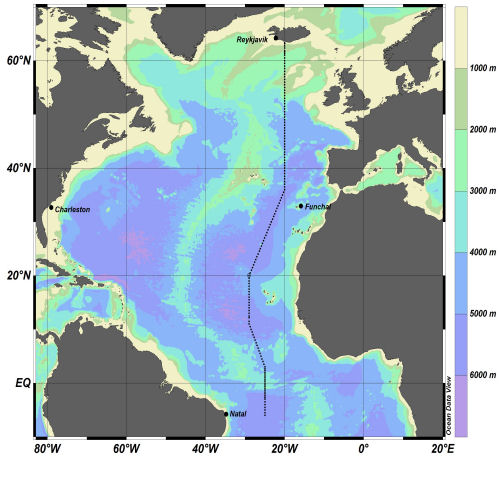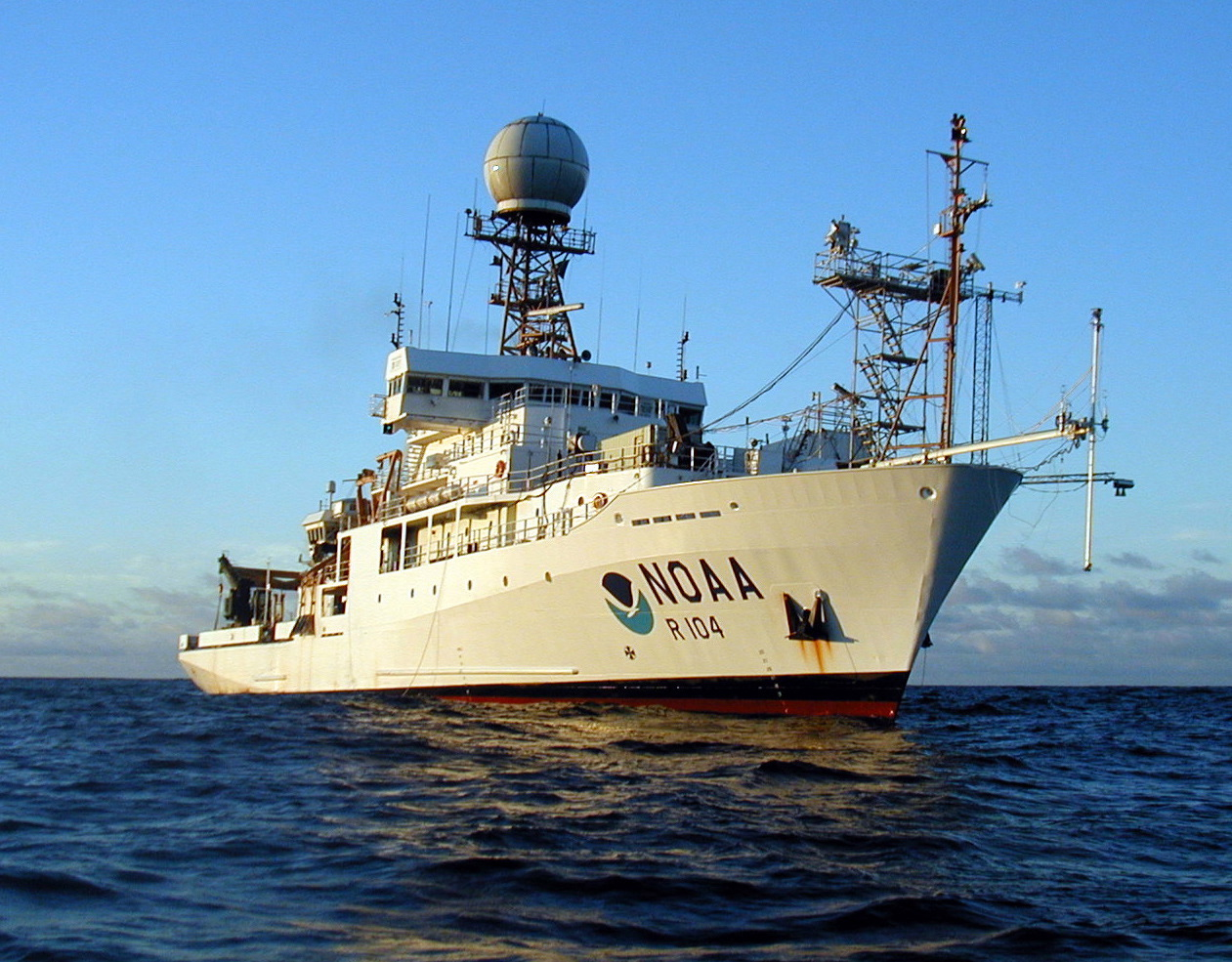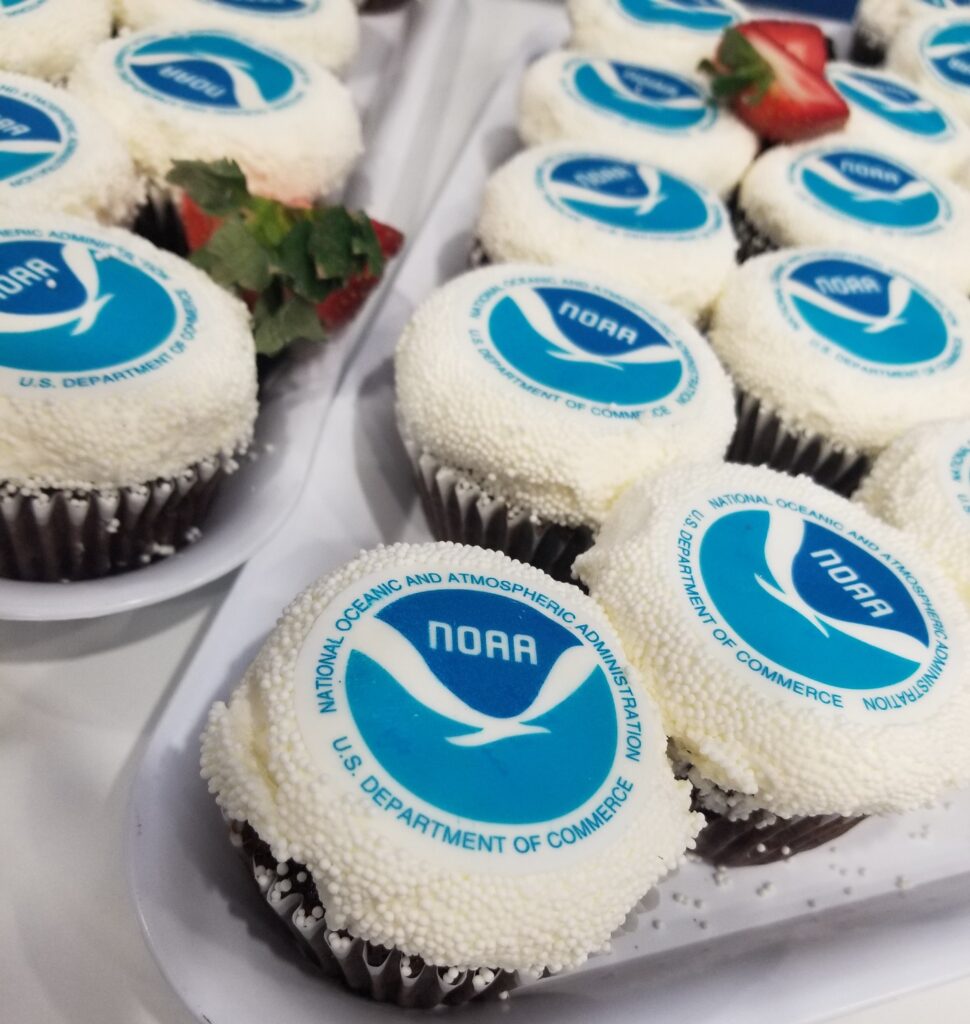30-years of ocean observations provide view into long-term ocean trends
On March 6, a team of scientists on the NOAA Ship Ronald H. Brown departed from Suape, Brazil for a 55-day cruise to the northerly waters of Reykjavik, Iceland. With 150 planned stops along this cruise track known as A16N, measurements of heat, freshwater, carbon, oxygen, and nutrients will be taken from the ocean’s surface to the seafloor, sometimes reaching depths greater than 5,000 meters (3.1 miles)!
This is not the first time such a holistic snapshot of the Atlantic Ocean basin has been made. Every 10 years for the past 30 years, a team of scientists have embarked on this cruise track with the aim of understanding long-term trends in the health and functioning of our oceans. These research cruises are part of a larger international project known as the Global Ocean Ship-based Hydrographic Investigations Program (GO-SHIP), which makes repeat ocean observations at decadal intervals through a global network of cruise tracks.
Data gathered on this cruise will address critical questions regarding changes to ocean circulation and the ocean’s uptake of human-released carbon dioxide. Scientists will investigate how the warming of our ocean impacts the movement of ocean water across the entire planet and influences our climate, including at critical locations in the North Atlantic.
Characterizing the responses of ocean life to ongoing climate change is also a priority of this cruise. For the first time on the A16N cruise, scientists will be collecting several biological measurements, including samples of environmental DNA (eDNA). The Atlantic is the only ocean basin where we see widespread shifts in three of the fundamental nutrients that are required for the growth of ocean life: nitrogen, phosphorus, and iron. The availability of such fundamental nutrients uniquely shapes the diversity, distribution, and functioning of marine life and biogeochemical cycles in the Atlantic. Data collected from this cruise will help track the biological changes of the Atlantic Ocean, and increase our general understanding of the diverse life inhabiting this ocean.
GO-SHIP cruises serve as a critical platform for testing, launching, and calibrating ocean observing technologies. In addition to collecting water samples, scientists on A16N will deploy up to 18 robotic Argo floats, including floats capable of measuring ocean biogeochemistry and the deep ocean, and up to 40 drifters as a part of NOAA’s Global Drifter Program. These autonomous floats and drifters will significantly expand the number of ocean measurements collected long after A16N is finished.
The cruise will bring together 45 researchers from 15 institutions to take measurements of the highest accuracy, test new instrumentation, and work towards improving our understanding and modeling of the ocean environment. This research is made possible by scientists at NOAA’s Atlantic Oceanographic and Meteorological and Pacific Marine Environmental Labs, and academic partners with financial support from NOAA’s Global Ocean Monitoring and Observing Program and the National Science Foundation. The A16N cruise also marks the last scientific voyage for the NOAA Ship Ronald H. Brown for one and a half years, as it is scheduled for dry-docking and repairs, and the first NOAA GO-SHIP mission since 2018. We wish the participants a safe and rewarding voyage!
Stay tuned for updates on the cruise! Learn more about GO-SHIP A16N.





